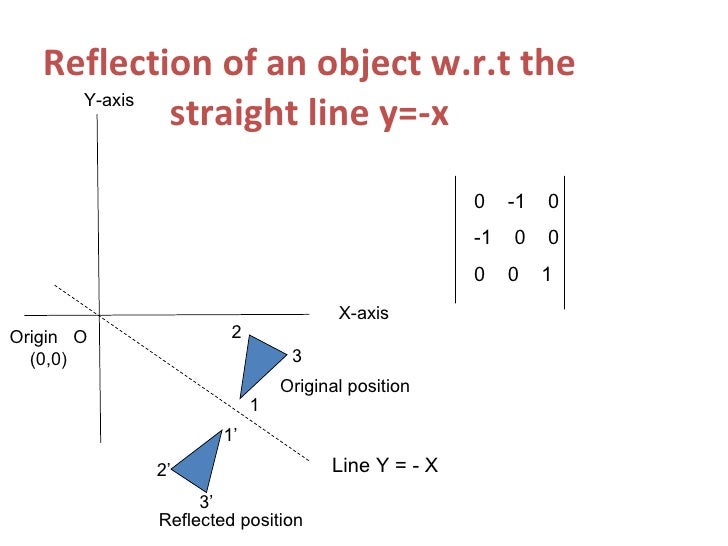

In this lesson, we’ll go over reflections on a coordinate system. So the effect of any set of mirrors can be reduced to a single 3x3. which reduces to a single effective mirror matrix. If light bounces off mirror 1, then 2 then 3, the net effect of these three reflections is.
#Matrix for reflection over y axis series#
Do the same for the other points and the points are also A series of reflections is modeled by successive mirror matrix multiplications. Since geometry tends to be taught after algebra in some cases, I think it's why they didn't explain it more in depth. If you don't understand slope -intercept, I recommend watching the videos Khan provides in the algebra courses. Ymx+b is just the basic slope-intercept equation. (a) Counterclockwise rotation through 120 about the origin (b) Reflection over the y-axis, followed by clockwise rotation through 270 about the origin 2. Count two units below the x-axis and there is point A’. The reflection line is the line that you are reflecting over. Find the standard matrix of the given linear transformation from R2 to R2. identity (the boring matrix no change), reflection in the y-axis. As a result, points of the image are going to be:īy counting the units, we know that point A is located two units above the x-axis. Draw a simple (non-symmetrical) shape with integer coordinates for its vertices. When we want to create a reflection image we multiply the vertex matrix of our figure with what is called a reflection matrix. Since the reflection applied is going to be over the x-axis, that means negating the y-value. Determine the coordinate points of the image after a reflection over the x-axis. You can also negate the value depending on the line of reflection where the x-value is negated if the reflection is over the y-axis and the y-value is negated if the reflection is over the x-axis.Įither way, the answer is the same thing.įor example: Triangle ABC with coordinate points A(1,2), B(3,5), and C(7,1). The rule for reflecting over the Y axis is to negate the value of the x-coordinate of each point, but leave the -value the same. The linear transformation matrix for a reflection across the line y m x is: 1 1 + m 2 ( 1 m 2 2 m 2 m m 2 1) So reflection across the x-axis would be: 1 1 + ( 0) 2 ( 1 ( 0) 2 2 ( 0) 2 ( 0) ( 0) 2 1) ( 1 0 0 1) But I’m having trouble thinking through what the matrix would be when we want to reflect every vector across the y-axis. To match the distance, you can count the number of units to the axis and plot a point on the corresponding point over the axis. To reflect a shape over an axis, you can either match the distance of a point to the axis on the other side of using the reflection notation.


 0 kommentar(er)
0 kommentar(er)
